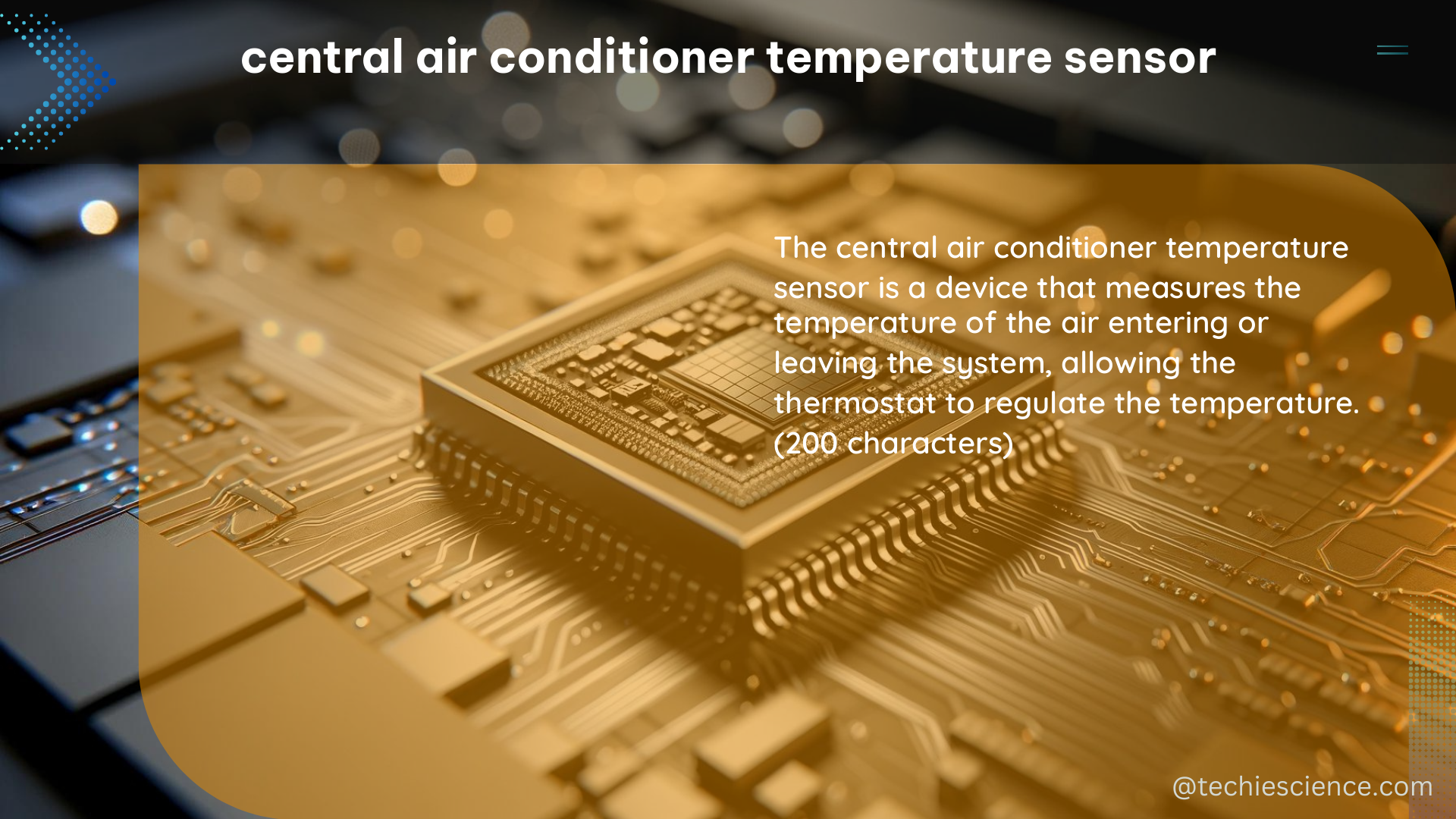The central air conditioner temperature sensor is a critical component in regulating the temperature of an air-conditioned space. It measures the temperature of the air entering and leaving the indoor unit, which helps maintain the desired indoor temperature. The accuracy and range of the temperature sensor are essential factors to consider when selecting a sensor for your central air conditioning system.
Understanding Temperature Sensors for Central Air Conditioners
Central air conditioning systems typically utilize various types of temperature sensors, including:
-
Resistance Temperature Detectors (RTDs): RTDs are known for their high accuracy, with a typical accuracy of ±0.4°C and a measurable temperature range of -200 to 800°C. They work by measuring the change in electrical resistance of a metal (usually platinum) as the temperature changes.
-
Thermocouples: Thermocouples are widely used in temperature measurement applications, with a measurable temperature range of 0 to 1000°C and an accuracy of 0.5% ±0.7°C. They generate a small voltage that is proportional to the temperature difference between the two junctions.
-
Thermistors: Thermistors are inexpensive and compact temperature sensors, with an accuracy of ±0.5°C. They work by measuring the change in electrical resistance of a semiconductor material as the temperature changes. However, their large non-linear effect requires calibration before use.
-
Integrated Circuit (IC) Sensors: IC sensors, such as thermopile-based sensors, are a powerful candidate for temperature measurement in central air conditioning systems. They use semiconductor technology to produce thermopiles and measure temperature variations through voltage changes between transistor bases and emitters. These sensors can achieve an accuracy of ±0.3°C.
Table 1 shows the typical accuracy and temperature range of these temperature sensor types:
| Sensor Type | Accuracy | Temperature Range |
|---|---|---|
| RTD | ±0.4°C | -200 to 800°C |
| Thermocouple | 0.5% ±0.7°C | 0 to 1000°C |
| Thermistor | ±0.5°C | Depends on calibration |
| IC Sensor | ±0.3°C | -40 to 50°C |
Advancements in Temperature Sensor Technology

The development of temperature sensors has been satisfactory in terms of accuracy, output linearity, and operational dynamics. Manufacturers have continuously improved the performance of these sensors to meet the growing demands of the HVAC industry.
One notable advancement is the use of thermopile-based IC sensors, which can be integrated with amplifier wiring to provide direct output of temperature sensing signals. These sensors leverage semiconductor technology to produce thermopiles, allowing for highly accurate temperature measurements with an accuracy of ±0.3°C.
Another trend in the industry is the integration of smart sensors, such as those found in mobile phones, wearable devices, and temperature/motion detectors. These sensors can measure various parameters, including voltage, current, temperature, and human motion, which can be used to optimize energy consumption and maintain a comfortable indoor environment.
Selecting the Right Temperature Sensor for Your Central Air Conditioner
When choosing a temperature sensor for your central air conditioning system, consider the following factors:
-
Accuracy: Ensure that the sensor’s accuracy meets the requirements of your HVAC system. Higher accuracy sensors, such as RTDs and thermopile-based IC sensors, are generally preferred for precise temperature control.
-
Temperature Range: Verify that the sensor’s measurable temperature range covers the expected operating conditions of your central air conditioner, which typically range from -40°C to 50°C.
-
Linearity and Stability: Look for sensors with good output linearity and long-term stability to ensure consistent and reliable temperature measurements over time.
-
Integration and Compatibility: Ensure that the sensor is compatible with your central air conditioning system’s control and monitoring components, allowing for seamless integration and data communication.
-
Cost and Availability: Consider the sensor’s cost and availability, as well as the ease of installation and maintenance, to ensure a cost-effective solution for your HVAC system.
Conclusion
The central air conditioner temperature sensor is a crucial component in maintaining a comfortable indoor environment. By understanding the different types of temperature sensors, their capabilities, and the latest advancements in the field, you can make an informed decision when selecting the right sensor for your central air conditioning system. Remember to consider factors such as accuracy, temperature range, linearity, and integration to ensure optimal performance and energy efficiency.
References:
– Sensor Technologies and Signal Conditioning for Indoor Environmental Quality – A Review
– Issuance of 2016-11-30 Energy Conservation Program: Test Procedures for Central Air Conditioners and Heat Pumps
– Sensor Devices and Sensor Signal Processing for Remote Patient Monitoring in Cloud-Based Healthcare System
– Sensor Fusion and Smart Home: A Review

The lambdageeks.com Core SME Team is a group of experienced subject matter experts from diverse scientific and technical fields including Physics, Chemistry, Technology,Electronics & Electrical Engineering, Automotive, Mechanical Engineering. Our team collaborates to create high-quality, well-researched articles on a wide range of science and technology topics for the lambdageeks.com website.
All Our Senior SME are having more than 7 Years of experience in the respective fields . They are either Working Industry Professionals or assocaited With different Universities. Refer Our Authors Page to get to know About our Core SMEs.